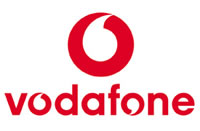 We all know the mobile handset is totally fragmented. Sure there’s a standard – it’s called Nokia – but everyone who isn’t Nokia isn’t very happy about that.
We all know the mobile handset is totally fragmented. Sure there’s a standard – it’s called Nokia – but everyone who isn’t Nokia isn’t very happy about that.
Vodafone, Motorola, NEC, NTT DoCoMo, Panasonic Mobile Communications and Samsung Electronics have today announced that they hope to change that. They’re getting together to embrace mobile Linux to “create world’s first globally adopted open mobile Linux platform.”
They’re intending to form an independent foundation whose primary focus is the joint development and marketing of an API specification, architecture, supporting source code-based reference implementation components and tools. Pretty comprehensive sounding, but only time will reveal the level of independence afforded to the foundation.
While we understand that they ‘intend to leverage the benefits of community-based’, we’re not really sure where their aims of proprietary development fit in to this. It is after all supposed to be an Open project.
 Who’s in? Who’s out?
Who’s in? Who’s out?
It’s not surprising to see that Nokia _aren’t_ part of it. Vodafone have for a long time been concerned that, when asked, their subscribers say they have, for example, a Nokia handset rather than a Vodafone service. Nokia also dominate with Symbian.
Also coming in the ‘Obviously’ category, is the lack of Microsoft. They’ve been desperate for years to try and become accepted as the mobile platform of choice, but despite a few successes haven’t managed it. Today’s announcement combined with the strength of Symbian will give them a bit of a kicking.
The other major who’s missing is Sony Ericsson.
Beyond the handset makers, it’s interesting to include NTT DoCoMo. Vodafone and NTT DoCoMo were competitors in the Japanese market – up to the point that they sold Vodafone Japan to Softback back in April. Now that barrier is removed, we’re sure that they’ll love to get closer to DoCoMo to learn the lessons of how they’ve made content such a success in Japan.
Symbian supporters two-time them
Both Samsung and Motorola have in the past sold handsets that use the Symbian OS, but since Nokia have been tightening their clutched on Symbian, it’s likely that they’re becoming increasingly nervous of using it.
The idea of being in control of their own destiny – at least to the software platform – will be much more appealing.
What’s driving this?
Mobile operators are always looking at finding ways for more people to sign to their networks, so decreasing handset costs while maximising features is of the utmost importance for them. This is made clear by Kiyohito Nagata, Vice President and Managing Director of NTT DoCoMo’s Product Department
Open is the new proprietory
Clearly being ‘open’ (the interpretation of which is highly variable) is quite the trend in mobile, with Nokia open sourcing their s60 browser a couple of weeks back.
 Much excitement is being generated by those companies already using Linux in their handsets. In a ‘don’t forget we’ve been doing this for ages’ way, Yoshiharu Tamura, Executive General Manager, Mobile Terminals Business Unit, NEC Corporation expounded , “As one of the leading pioneers with almost two years of experience shipping Linux-based mobile phones, we are delighted to participate in this initiative. We expect the foundation activities will accelerate further expansion of mobile Linux application developer participation, as well as global market growth of 3G mobile handsets.”
Much excitement is being generated by those companies already using Linux in their handsets. In a ‘don’t forget we’ve been doing this for ages’ way, Yoshiharu Tamura, Executive General Manager, Mobile Terminals Business Unit, NEC Corporation expounded , “As one of the leading pioneers with almost two years of experience shipping Linux-based mobile phones, we are delighted to participate in this initiative. We expect the foundation activities will accelerate further expansion of mobile Linux application developer participation, as well as global market growth of 3G mobile handsets.”
Not to be left out from showing off, Osamu Waki, Managing Director of Panasonic Mobile Communications, plugged like mad, “Linux sits at the core of Panasonic Group’s software strategy, and to date we have shipped nearly 8 million Linux based handsets in the highly competitive Japanese market.”
 Nokia has announced the winning entries in the Forum Nokia S60 3rd Edition Challenge global developer competition, dishing out a cool €100,000 in prizes to winning mobile applications developers.
Nokia has announced the winning entries in the Forum Nokia S60 3rd Edition Challenge global developer competition, dishing out a cool €100,000 in prizes to winning mobile applications developers. 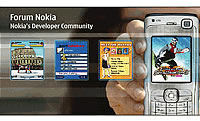 Quickoffice Premier 4 scooped up Best Enterprise Application, with the product allowing users to open, view and edit Microsoft Office documents on the move.
Quickoffice Premier 4 scooped up Best Enterprise Application, with the product allowing users to open, view and edit Microsoft Office documents on the move. InfoTalk Corporation’s Music Finder grabbed the honours for Best Mobile Music Application. The program provides a speedy way to use search for music files using voice commands, with users able to speak a song title, artist’s name or playlist in response to an audio prompt instead of scrolling through zillions of MP3s.
InfoTalk Corporation’s Music Finder grabbed the honours for Best Mobile Music Application. The program provides a speedy way to use search for music files using voice commands, with users able to speak a song title, artist’s name or playlist in response to an audio prompt instead of scrolling through zillions of MP3s.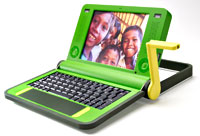 Yesterday, a spokesperson for the One Laptop Per Child (OLPC) programme revealed that Nigeria, Brazil, Argentina, and Thailand have all tendered commitments to purchase one million Linux laptops through the ambitious US-based programme.
Yesterday, a spokesperson for the One Laptop Per Child (OLPC) programme revealed that Nigeria, Brazil, Argentina, and Thailand have all tendered commitments to purchase one million Linux laptops through the ambitious US-based programme.  This means that each laptop will be able to talk to its nearest neighbour and create ad hoc, local area networks for sharing data and connections.
This means that each laptop will be able to talk to its nearest neighbour and create ad hoc, local area networks for sharing data and connections. 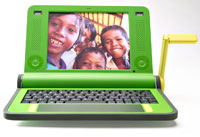 So far, AMD, eBay, Google, Nortel, Red Hat, and a number of other technology companies have all signed up to help support the project
So far, AMD, eBay, Google, Nortel, Red Hat, and a number of other technology companies have all signed up to help support the project  We all know the mobile handset is totally fragmented. Sure there’s a standard – it’s called Nokia – but everyone who isn’t Nokia isn’t very happy about that.
We all know the mobile handset is totally fragmented. Sure there’s a standard – it’s called Nokia – but everyone who isn’t Nokia isn’t very happy about that.  Who’s in? Who’s out?
Who’s in? Who’s out? Much excitement is being generated by those companies already using Linux in their handsets. In a ‘don’t forget we’ve been doing this for ages’ way, Yoshiharu Tamura, Executive General Manager, Mobile Terminals Business Unit, NEC Corporation expounded , “As one of the leading pioneers with almost two years of experience shipping Linux-based mobile phones, we are delighted to participate in this initiative. We expect the foundation activities will accelerate further expansion of mobile Linux application developer participation, as well as global market growth of 3G mobile handsets.”
Much excitement is being generated by those companies already using Linux in their handsets. In a ‘don’t forget we’ve been doing this for ages’ way, Yoshiharu Tamura, Executive General Manager, Mobile Terminals Business Unit, NEC Corporation expounded , “As one of the leading pioneers with almost two years of experience shipping Linux-based mobile phones, we are delighted to participate in this initiative. We expect the foundation activities will accelerate further expansion of mobile Linux application developer participation, as well as global market growth of 3G mobile handsets.”  At the W3C conference in Edinburgh today, in a move to get the mobile industry (and possibly more) to standardise on a single Web browser, Nokia has released the source code for the mobile Web browser it developed last year.
At the W3C conference in Edinburgh today, in a move to get the mobile industry (and possibly more) to standardise on a single Web browser, Nokia has released the source code for the mobile Web browser it developed last year. 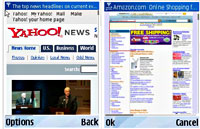 “We want to reduce the fragmentation currently in place in mobile browsing,” said Lee Epting, VP of Forum Nokia, Nokia’s software development support program.
“We want to reduce the fragmentation currently in place in mobile browsing,” said Lee Epting, VP of Forum Nokia, Nokia’s software development support program.  Mozilla’s Firefox continues to bite into Internet Explorer’s once-unassailable market dominance, snaffling 10 percent of the Web browser market in March, according to Web audience measurement firm Net Applications.
Mozilla’s Firefox continues to bite into Internet Explorer’s once-unassailable market dominance, snaffling 10 percent of the Web browser market in March, according to Web audience measurement firm Net Applications. 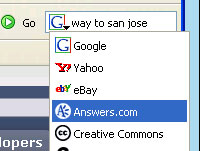 Firefox’s rise has been slow but inexorable, with the improved feature set of version 1.5 helping them garner a 3.34 percent share over the year.
Firefox’s rise has been slow but inexorable, with the improved feature set of version 1.5 helping them garner a 3.34 percent share over the year. 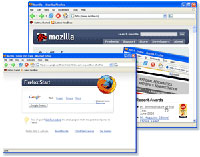 Get optimising!
Get optimising!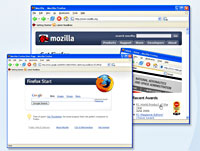 According to figures released by French Web metrics firm XiTi, the open source Mozilla Firefox browser has now grabbed a massive 20% average market share in Europe, creating a growing challenge to the current leader, Microsoft Internet Explorer.
According to figures released by French Web metrics firm XiTi, the open source Mozilla Firefox browser has now grabbed a massive 20% average market share in Europe, creating a growing challenge to the current leader, Microsoft Internet Explorer.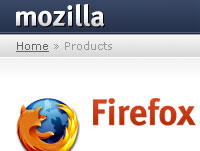 Over here in Blighty, it seems that the Brits are yet to be wooed by the might of Mozilla, with the country recording one of the lowest proportions of Firefox users in Europe – just 11%.
Over here in Blighty, it seems that the Brits are yet to be wooed by the might of Mozilla, with the country recording one of the lowest proportions of Firefox users in Europe – just 11%. Other Web metrics companies have produced somewhat less spectacular estimates of Firefox’s market share, with OneStat.com reporting in November last year that the browser had notched up a global market share of 11.5%.
Other Web metrics companies have produced somewhat less spectacular estimates of Firefox’s market share, with OneStat.com reporting in November last year that the browser had notched up a global market share of 11.5%. The $100 laptop project launched by MIT Media Lab, gained a big boost yesterday when the labs Nicholas Negroponte met with UN Secretary-General Kofi Annan at the World Summit on the Information Society in Tunisia.
The $100 laptop project launched by MIT Media Lab, gained a big boost yesterday when the labs Nicholas Negroponte met with UN Secretary-General Kofi Annan at the World Summit on the Information Society in Tunisia.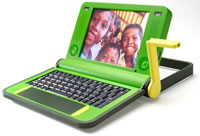 “USB ports galore” will be provided as will built-in WiFi. The only thing it will be missing is a hard drive. We’d imagine that this will be down to the additional power drain they have, and to try and maintain the necessary ruggedness. The networking will be via a wireless mesh.
“USB ports galore” will be provided as will built-in WiFi. The only thing it will be missing is a hard drive. We’d imagine that this will be down to the additional power drain they have, and to try and maintain the necessary ruggedness. The networking will be via a wireless mesh.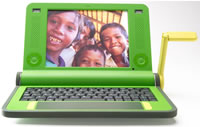 All software will be open source as in Negroponte view “open source software is the key to innovation in software and learning technology.”
All software will be open source as in Negroponte view “open source software is the key to innovation in software and learning technology.” The impact of this project could be huge on many fronts – if it comes into being – and we’ve no reason to imagine that it won’t. Giving any and every child access to a computer, and teaching them to use it and inspiring them will be the start of a revolution bring free communication and equal learning to all citizens.
The impact of this project could be huge on many fronts – if it comes into being – and we’ve no reason to imagine that it won’t. Giving any and every child access to a computer, and teaching them to use it and inspiring them will be the start of a revolution bring free communication and equal learning to all citizens. Dell have started shipping a Windows-less desktop PC for customers looking to install other operating systems on their PCs.
Dell have started shipping a Windows-less desktop PC for customers looking to install other operating systems on their PCs.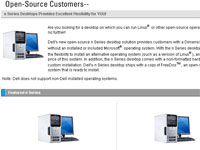 Dell’s new Dimension E510n PC comes with a blank hard drive untouched by all things Microsoft, with the company bunging in a copy of the obscure FreeDOS operating system for users to install, if they so desire.
Dell’s new Dimension E510n PC comes with a blank hard drive untouched by all things Microsoft, with the company bunging in a copy of the obscure FreeDOS operating system for users to install, if they so desire.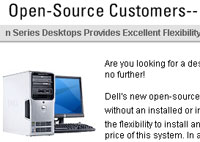 The base machine’s reasonably specified (a Pentium 4 processor, 512Mbytes memory, 128MB ATI Radeon X300SE HyperMemory video card, Sound Blaster®Live! 24-bit Audio and 80GB hard drive), and knocks out for $774 (~e647~£439).
The base machine’s reasonably specified (a Pentium 4 processor, 512Mbytes memory, 128MB ATI Radeon X300SE HyperMemory video card, Sound Blaster®Live! 24-bit Audio and 80GB hard drive), and knocks out for $774 (~e647~£439).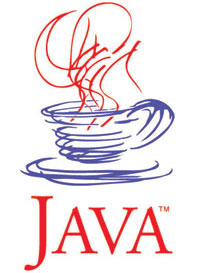 Google and Sun Microsystems have come up with a broad, but fuzzy, deal which will see the two companies developing and distributing each other’s technology in a move to challenge Microsoft’s Office suite dominance.
Google and Sun Microsystems have come up with a broad, but fuzzy, deal which will see the two companies developing and distributing each other’s technology in a move to challenge Microsoft’s Office suite dominance. 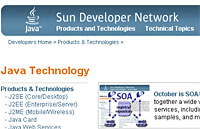 It’s also expected that the deal will make it easier for freeloading punters to obtain OpenOffice, Sun’s well-regarded, freely distributed office productivity suite which directly competes with Microsoft Office.
It’s also expected that the deal will make it easier for freeloading punters to obtain OpenOffice, Sun’s well-regarded, freely distributed office productivity suite which directly competes with Microsoft Office. Bundling the two products together seems a wise move, increasing the appeal of the Google Toolbar and making Java a more attractive proposition for software developers.
Bundling the two products together seems a wise move, increasing the appeal of the Google Toolbar and making Java a more attractive proposition for software developers. Sun’s Chief Operating Officer Jonathan Schwartz has been speaking at the Progress and Freedom Foundation Aspen Summit about how incompatible strains of DRM from different companies will not be good for the consumer.
Sun’s Chief Operating Officer Jonathan Schwartz has been speaking at the Progress and Freedom Foundation Aspen Summit about how incompatible strains of DRM from different companies will not be good for the consumer.